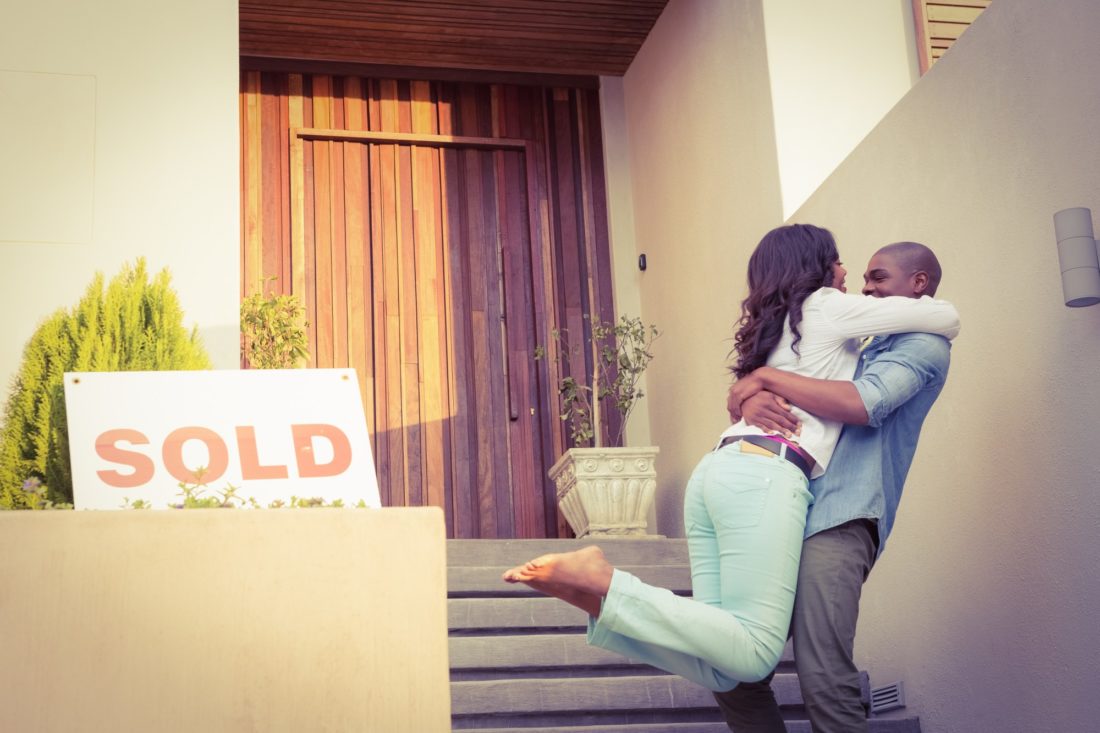 According to a NerdWallet survey, 75% of Americans say buying a home is a priority.
According to a NerdWallet survey, 75% of Americans say buying a home is a priority.
Tired of living in dingy apartments (or your parents’ basement)? If you’re about to buy your first home, it helps to know what you’re getting into. Preparing ahead of time can keep you on the right track and help you avoid missteps in the process.
So where do you start?
Keep reading to discover our first-time home buyer checklist. With this list, you can find your dream home without overspending.
Turn a nerve-racking, first-time experience into an adventure with these tips!
Table of Contents
1. Pay Off Your Debt & Start Saving
The first item on our first-time home buyer checklist: start saving!
Buying a home is expensive. While your monthly rate might look cheaper than your current monthly rent, you need to see the big picture. You’re responsible for the maintenance and upkeep costs now!
Those expenses can stack up quickly. As first-time buyers, you need to make sure you have the money to buy your home. Before you start shopping, make sure you’re debt-free.
Then, create an emergency fund. Save three to six months of expenses in this nest egg, just in case.
It’s important you remain debt-free. Remain savvy about how you spend. That includes choosing your new home, decorating, and other expenses.
2. Determine Your Budget
Before you fall in love with a home that’s far beyond your budget, determine how much you can spend. Review your monthly budget, leaving room for monthly housing costs:
- HOA fees
- Taxes
- Insurance
Make sure those costs don’t exceed 25% of your monthly take-home pay.
A real estate agent or insurance company can help you calculate property tax rates and the cost of homeowner’s insurance, since these costs vary.
3. Save a Down Payment
For some first-time home buyers, saving up to pay cash for the total price of your home isn’t reasonable. Instead, consider saving for a down payment of 20% or more. Saving for your down payment will help you avoid private mortgage insurance (PMI).
The PMI is usually added to your monthly payment, which could affect your budget.
Make sure to avoid low-to-no down payment mortgage options, including:
- Adjustable-rate mortgages (ARMs)
- FHA loans
- VA loans
Instead, consider a 15-year, fixed-rate conventional mortgage with a 20% down payment. A 15-year term creates a higher monthly payment. As a result, you’ll pay off the mortgage in half the time with a lower interest rate.
That could help you save thousands in interest!
4. Save for Closing
Next on our first-time home buyer checklist: you’ll need to save for closing costs.
Typically, closing costs are about 3 to 4% of your home’s purchase price. A lender can give you a more specific number. These fees can include:
- Appraisal
- Home inspection
- Credit report check
- Attorney
- Homeowner’s insurance
Saving for these costs ahead of time can help you avoid debt. However, you might need to hustle.
Consider picking up a second job or selling possessions you no longer need. You can also move into a smaller apartment with a roommate while you’re saving. That way, you can afford your new home as first-time buyers when the day arrives.
5. Get Pre-Approved for Loans
Feeling confident you have enough saved to pay for closing costs and 20% of your home? In that case, you’re ready to speak with a mortgage lender about the remaining 80%.
Get pre-qualified for a loan to save time. Receiving pre-approval before you start shopping tells sellers you’re serious. That might end up being the edge you need to get ahead of other first-time home buyers.
To receive approval, your lender will verify your financial information. This includes your income and taxes. Then, they’ll submit your loan for preliminary underwriting. If you’re debt-free, look for a lender who prefers debt-free homeownership.
6. Start Searching
Whether you search online or in-person is up to you. However, most home buyers find their home:
- Online (51%)
- Through a real estate agent (34%)
- Yard or open house signs (8%)
- Friends, relatives, or neighbors (4%)
- Homebuilders (2%)
- Sellers (1%)
- Print newspaper ads (1%)
Make a list of homes you like by searching online. Then, send them to your real estate agent, so they have an idea of what you’re looking for you. A real estate agent can then use a multiple listing service (MLS) to find other homes that meet your criteria.
An MLS is maintained by real estate professionals. This is an excellent tool that can help first-time buyers discover all range of property options.
7. Check Neighborhoods
After you find a few homes you like (that are within your price range!), check out the neighborhood. You’ll want to feel comfortable where you live. Check for crime rates and nearby schools to determine the quality of the neighborhood. Location plays a huge part in determining your overall living experience, from daily convenience to long-term property value. For instance, you can even research the benefits of living in Northern Utah if you are planning to relocate there, or any other area that catches your interest. Taking the time to understand a neighborhood beforehand ensures you’ll feel truly at home once you move.
Don’t forget to consider commute times as well.
8. Attend Open Houses
Once you’ve narrowed down the neighborhoods, attend a few open houses. Tour the homes that are for sale and see if you fall in love.
Try to find the most affordable house in the best neighborhood. That way, you’re within your budget with the potential to build home value by adding upgrades throughout your home.
You can also explore affordable prefab homes as you start your search.
9. Make an Offer
Now for the exciting part of our first-time home buyer checklist: making your first offer! Since you’re already pre-approved for a loan, you’re good to go. You can rely on your real estate agent’s expertise to determine how much you should offer.
Make sure it’s competitive but still within your budget. Consider adding a personalized letter to help your offer stand out from the rest.
10. Prepare for Closing
Once the seller accepts your offer, you have a new home! Now you’ll need to begin the closing process, which takes around 43 days. That gives you plenty of time to start a closing process checklist!
Use This First-Time Home Buyer Checklist
Start your journey toward discovering your new home! With this first-time home buyer checklist, you can find your dream home stress-free.
Once you find your dream home, explore the Home Improvement section of the blog for plenty of tips!







